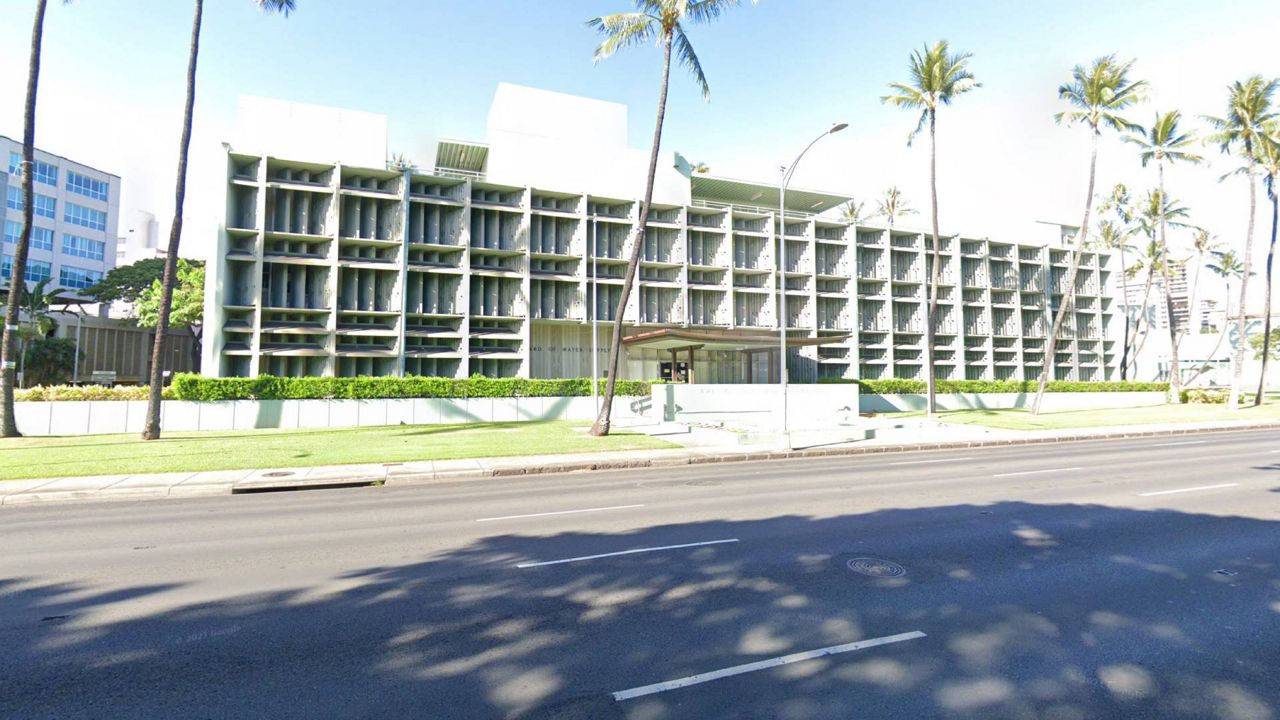The Board of Water Supply announced Wednesday it was shutting down its Aiea well. Last Thursday, the Board of Water Supply also shut down its Halawa well.
The recent closure comes after the Board of Water Supply was informed by the U.S. Navy that it had found contamination at its Aiea-Halawa shaft, according to a Board of Water Supply press release.
The Department of Health said in a press release that the samples collected at the Navy’s Aiea-Halawa shaft were at a level of 920 parts per billion of total petroleum hydrocarbons diesel, which is twice as high as acceptable levels.
The Board of Water Supply’s Halawa well is located 1.5 miles away from the Navy’s Aiea-Halawa well. Last week’s closure of the Halawa well came as a precautionary measure after the Board of Water Supply was informed of contamination at the Navy’s Red Hill well.
Starting in late November, residents who use the U.S. Navy’s water system reported smelling gasoline coming from the tap as well as experiencing physical symptoms, such as nausea, rashes and vomiting.
The Board of Water Supply said it took samples earlier in the week from their Aiea and Halawa wells, which were sent to a mainland lab and results are expected late next week. So far, they have not detected petroleum in their wells.
BWS manager and chief engineer Ernest Lau said Thursday at a press conference that the Aiea well serves 20,000 people from Halawa to Waimalu, including the Pearlridge Shopping Center and the Pali Momi Medical Center. He said they would be asking residents to conserve water.
“Be careful how you use water. Don’t waste it,” he said. For example, he continued, if it’s raining outside and a resident has an automatic sprinkler, then please turn it off.
He said that shutting down the two Board of Water Supply wells would put a strain on the other wells, which would have to keep up with the demand.
During the press conference, Lau was asked about the Navy’s test results from its Aiea-Halawa well, which showed the elevated levels of total petroleum hydrocarbon, because earlier on Thursday the Navy had issued its own press release saying they were doing additional tests and claimed the initial “sample did not come directly from the Navy’s Aiea-Halawa well.”
Instead, they said the Navy received “verbal results of an elevated sample on the Halawa portion of the distribution system,” and that after they received these results, they notified the Hawaii Department of Health and Board of Water Supply.
“After reviewing the detailed results from the independent laboratory conducting the testing, the Navy determined that the sample was not from the Halawa well but from an off-service section of the water distribution system,” the Navy press release continued.
During the Board of Water Supply’s press conference, Lau called the Navy’s latest media release “interesting,” adding that after the Board of Water Supply’s initial call from the Navy informing them total petroleum hydrocarbon diesel that they received another call a few hours later from the same Navy representative. “Basically, trying to downplay that the result was not indicative of what’s in the aquifer,” he said.
Lau asked the Navy representative where the diesel came from, if it’s not coming from the Aiea-Halawa well. However, he did not receive an answer. He said he recommended that the Navy take more samples from the well in order to validate the test results.
He also asked the Navy for the full lab report, which showed the 920 parts per billion, but said the Board of Water Supply has not yet received it. He added that the Navy is still not regularly sending their test results to the Department of Health as requested.
“For now, we’re just going on the basis that it [the petroleum] has gotten into the aquifer,” said Lau. “We’re taking precautionary measures, shutting our wells down that pump from the same aquifer, because we cannot afford to repeat what the Navy’s customers are experiencing right now.”
While the cause of the problem has not been confirmed, many questions have surrounded the U.S. Navy’s Red Hill Storage Facility, where as much as 250-million gallons of fuel are stored in 20 giant underground tanks that were built in the 1940s. The tanks have leaked numerous times, including as recently as Nov. 20, 2021, when a 14,000-gallon mixture of water and fuel was released. The storage facility sits about 100-feet above an aquifer, which is where the wells pump groundwater from in order to supply residents living between Halawa and Hawaii Kai.
Erwin Kawata, the program administrator for the water quality division of the Board of Water Supply, said during the press conference that they have reviewed the Navy’s data of the groundwater beneath the Red Hill Storage Facility and that “there are detectable levels of petroleum contamination in the groundwater underneath the tanks.”
“The results so far give us concern that there is petroleum contamination from the Navy’s water source at the Red Hill shaft and certainly from the most recent one, the Navy’s Aiea-Halawa shaft,” Kawata said.
Lau reiterated that the best way to avoid the problem was to drain the Navy’s fuel tanks at the Red Hill Storage Facility, and that if they don’t do that they risk further contamination of the water system.
The Department of Health issued an order to the U.S. Navy earlier this week to remove fuel from the storage tanks at Red Hill. On Monday, Gov. David Ige issued an emergency order to the Navy to suspend fuel storage operations at Red Hill and to develop a plan to drain fuel from its 20 underground tanks.
Protesters have gathered multiple times in the last two weeks, while holding signs demanding the U.S. Navy defuel and decommission the Red Hill Fuel Storage Facility.



